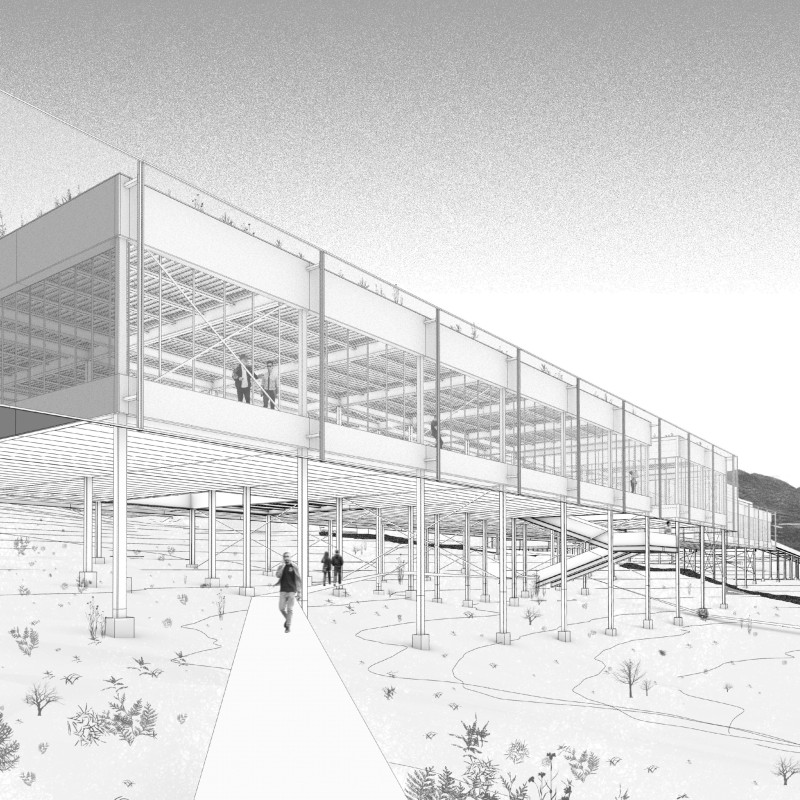5 key facts about this project
At its core, the project functions as a multi-use space, designed to accommodate various activities that cater to the diverse needs of its users. The layout prioritizes flexibility and accessibility, evident in the thoughtfully arranged interiors that encourage interaction and engagement. Open, flowing spaces are complemented by strategically placed areas for communal gathering, promoting social cohesion and collaboration among users. This design approach not only reflects the contemporary need for multifunctional spaces but also embodies a commitment to inclusivity, making the project accessible to a broader audience.
The project’s material palette further enhances its identity. A careful selection of concrete, glass, wood, steel, and stone not only highlights the architectural integrity of the design but also underscores a dedication to sustainability. The concrete forms the structural backbone, allowing for expansive and inviting spaces. In contrast, the glass façades facilitate an abundance of natural light, promoting well-being and reducing reliance on artificial lighting. Meanwhile, the use of wood brings warmth and texture to the interiors, creating an inviting atmosphere, and connecting the design to its natural context. Steel elements provide structural clarity and support, enabling longer spans and open layouts that encourage fluid movement. Lastly, local stone used for cladding connects the building to its geographic roots, grounding it in the local context and honoring the regional architectural vernacular.
The design also integrates innovative approaches that reflect current architectural trends and best practices. For example, the incorporation of green roofs and rainwater harvesting systems showcases a proactive response to environmental challenges, aiming to reduce the building’s ecological footprint while enhancing its visual appeal. Landscape design is equally considered, with planting strategies that incorporate native flora, promoting biodiversity and minimizing maintenance requirements. This integration ensures that the project is not only aesthetically pleasing but also socially and environmentally responsible.
Unique in its approach, the project uses architectural elements that evoke a sense of place and identity. Features such as [describe any notable features or systems, e.g., unique rooflines, façade textures, or interior arrangements] enhance the user experience, inviting exploration and interaction. The design communicates a narrative that celebrates both its functional purpose and its role within the larger community, fostering a sense of pride among users and local inhabitants.
In harmonizing architectural form with functionality, this project exemplifies a holistic understanding of modern architecture. By blending sustainable practices with user-centric design, it serves as a model for future developments in the area. Those interested in gaining deeper insights into this project are encouraged to explore the architectural plans, sections, and designs that illustrate the thoughtful decisions and ideas underpinning this remarkable endeavor. The presentation provides an immersive look at how each aspect of the design works together to create a cohesive and meaningful architectural expression.


 Carlos Gonzalez Arana
Carlos Gonzalez Arana 




















